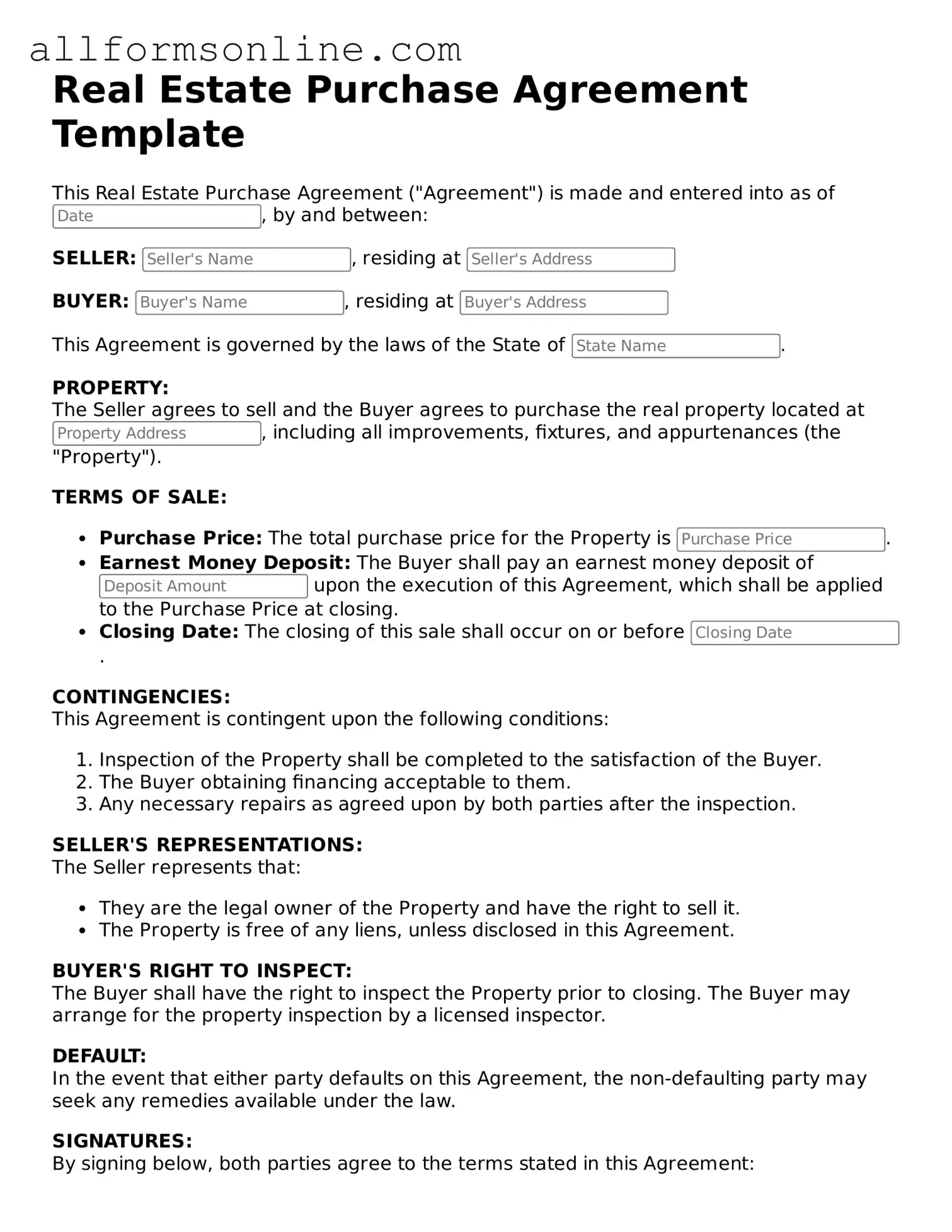What is a Real Estate Purchase Agreement?
A Real Estate Purchase Agreement is a legal document that outlines the terms and conditions under which a buyer agrees to purchase a property from a seller. This agreement typically includes details such as the purchase price, closing date, and any contingencies that must be met before the sale can be finalized. It serves as a binding contract once both parties have signed it, ensuring that everyone is clear on their obligations and expectations throughout the transaction process.
What key elements should be included in the agreement?
Several important elements should be included in a Real Estate Purchase Agreement. These typically encompass the names of the buyer and seller, a detailed description of the property, the purchase price, and any earnest money deposits. Additionally, it should outline any contingencies, such as financing or home inspections, and specify the closing date. Including these details helps protect both parties and ensures a smoother transaction.
What are contingencies, and why are they important?
Contingencies are specific conditions that must be met for the sale to proceed. Common contingencies include the buyer securing financing, the property passing a home inspection, or the sale of the buyer's current home. These provisions are crucial because they provide an opportunity for buyers to back out of the agreement without penalty if certain conditions are not met. This protects the buyer's interests and allows for a more secure transaction.
Can a Real Estate Purchase Agreement be modified?
Yes, a Real Estate Purchase Agreement can be modified, but both parties must agree to any changes. Modifications can occur for various reasons, such as adjusting the closing date or altering the terms of a contingency. It is essential to document any changes in writing and have both parties sign the amended agreement to ensure that the modifications are legally binding.
What happens if either party breaches the agreement?
If either party fails to fulfill their obligations as outlined in the Real Estate Purchase Agreement, it is considered a breach of contract. The consequences of a breach can vary depending on the circumstances. The non-breaching party may have the right to seek damages, enforce the agreement, or terminate the contract. Legal recourse can be complicated, so it is often advisable to consult with a legal professional to understand the best course of action.
Is it necessary to have a real estate agent when using a Purchase Agreement?
While it is not legally required to have a real estate agent when using a Real Estate Purchase Agreement, having one can be beneficial. Real estate agents possess expertise in the buying and selling process and can help navigate the complexities of the agreement. They can also provide valuable insights into market conditions, assist with negotiations, and ensure that all legal requirements are met, making the process smoother for both parties.
